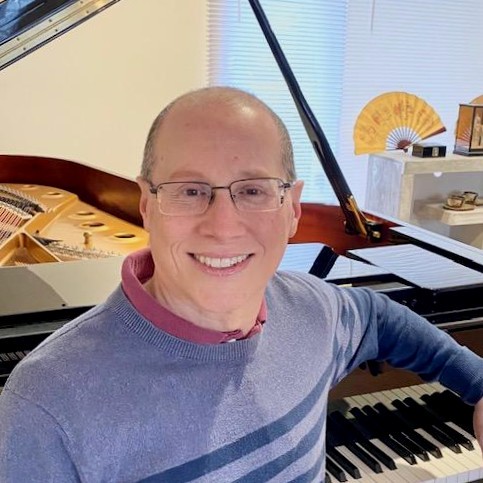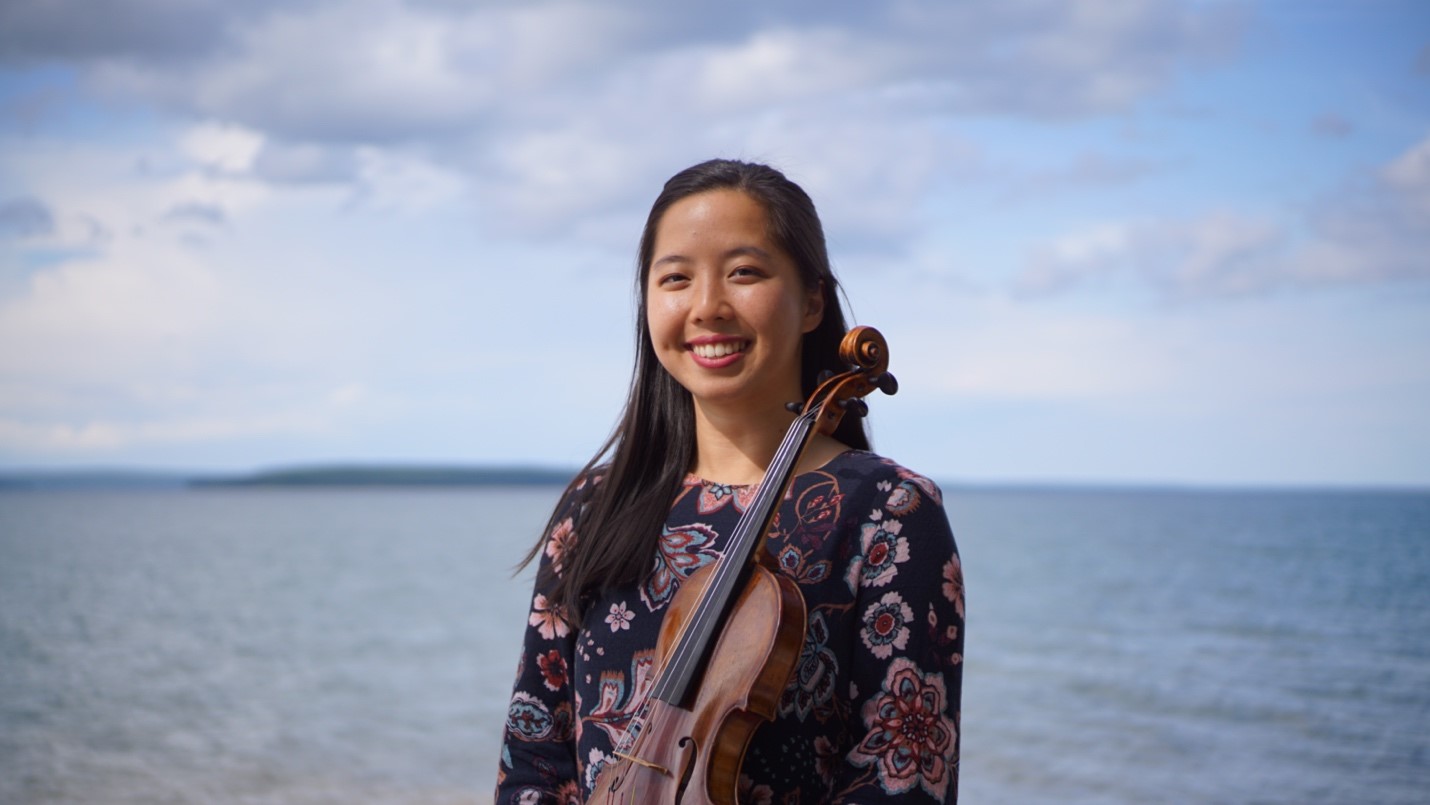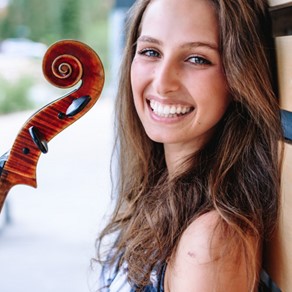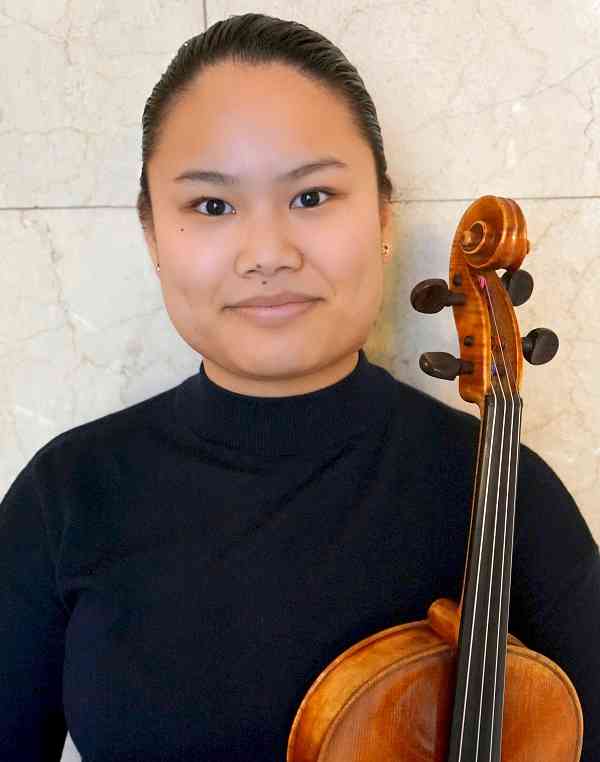Joachim’s ‘Frei aber einsam’ : The Nashville Chamber Music Society
I enjoyed attending the Nashville Chamber Music Society’s (NCMS) recent November 12, 2023 performance at Nashville’s Steinway Gallery on Sidco Drive. I’ve looked forward to this recital since my first introduction to the NCMS at their Covenant Presbyterian Church performance on October 27. It should be noted that in my last review of NCMS (see “Water Color, Reverence, and some Drama”), I wrote about founder and cellist MaryGrace Bender’s vision of employing music for the purpose of building community. Those words came to mind at this most recent event since I was so kindly greeted and welcomed by the performers, their families, and spectators whom I met at the last event before (as well as new friends). NCMS audience members feel they are enjoying an evening of fine music with friends.

In addition to Bender on cello, the evening’s performers included violist Katja Yeager, an active orchestral, chamber, and studio musician, and teacher in Nashville; violinist Charissa Leung, a member of the Nashville Symphony’s violin section who also enjoys teaching children violin; and internationally acclaimed pianist and chamber musician Evan Solomon. Important to mention is that in addition to Solomon’s impressive collaborative work, he recently premiered the Concerto for Piano and Orchestra by composer Gerald Busby with the Orchestra at Shelter Rock in New York.
I had never heard of the F-A-E Sonata before tonight. Leung explained that the sonata was composed in 1853 by Albert Dietrich, Robert Schumann, and Johannes Brahms for violinist virtuoso Joseph Joachim. F-A-E is an acronym for Joachim’s personal motto, Frei aber einsam—or Free but Lonely—which expressed his belief that to be a true artist, one must remain unmarried—or free—and separate from formal institutions. Dietrich composed the sonata’s first movement, Schumann composed movements two and four, and Brahms’s third movement—a scherzo—is widely considered to be the piece’s standout section, and this is where Leung and Solomon’s performance shined the most. Leung plays with a rich, beautiful tone, and her musical sensitivity enables her to exquisitely navigate through the contrasting sections of the scherzo. Solomon on the piano supplied a needed sense of leadership, establishing the correct mood and energy for Leung to buttress her admirable performance.

There is nothing like the opulent and dark sound of the viola, and Yeager’s performance of Johannes Brahms’s Viola Sonata in F minor superbly exhibited the instrument’s unique timbral quality. Brahms, reasonably known for writing some of the most wonderful melodic material, the first movement’s—Allegro appassionato—exposition contains my favorite melodies of the entire piece. In the movement’s primary theme, with its large, sweeping leaps, Yeager employed just the right amount of portamento and “weepy” vibrato indicative of this Romantic style. Also, talk about “the Devil is in the details,” after several virtuosic gestures, the piece’s energy slows during a gorgeous transitional moment into the secondary theme, which Yeager performed beautifully. Yeager talked about the work: originally written for clarinet, Brahms transcribed both his opus-15 clarinet sonatas for viola and violin—the other in E-flat major—but the violin version is rarely heard today. Brahms was initially cynical about his reworking of the sonatas for viola. He thought it might come across as “clumsy and ungratifying.” Today, the viola version of the sonatas has outnumbered the original clarinet in recordings, perhaps because there are fewer viola solos for players to choose from; Brahms’s sonatas are still necessary in trying to fill that gap.

I thought I was familiar with Gabriel Fauré’s work, since at one time I listened rather intently to a number of his solo and chamber pieces, and his music for larger ensembles. However, upon hearing Fauré’s Piano Quartet No. 1 in C minor, I was quite taken with how Romantic it sounded. I had to do a bit a research of my own to see why. When we think of French music that cusps the late-nineteenth and early-twentieth centuries, Claude Debussy and his influence on French art music comes to mind. However, Piano Quartet No. 1 was still written in the late nineteenth century. The opening of the first movement seems like it was by Brahms because of the thick texture. The score may look French, but it sounds very German with a bit of French and, at least in the first movement, some British-pastoral moments are sprinkled in.
In the first movement, Solomon played Fauré’s highly active and thickly textured, chromatic piano part while the violin, viola, and cello executed an intricate and mostly diatonic unison melodic line with momentary non-referential diversions—said another way, the melody mostly stays inside of a key but slips in and out of it from time to time. The effect is almost uncanny—it’s absolutely gorgeous and interesting. The unison melody eventually breaks up into individual parts using harmonies constructed from the whole-tone collection, typical for a French composer of this era. Overall, Bender, Yeager, Leung, and Soloman skillfully executed the movement’s delicate conclusion.
The second movement—Scherzo. Allegro vivo—of the Fauré is lighter and glittery, like a conversation between the instruments instigated by the piano. With the breakneck tempo, the players effectively used their silent communication, precisely handing off the melodic fragments containing rapidly moving surface rhythms around to each other. It was very well executed. Also interesting was the muted section showcasing a new unique timbre to the performance.

The Adagio third movement is in C minor, and the cello begins a languidly ascending line where the viola and violin enter staggered. Mournful and melancholic, the returning ascending motive seems to reach for the light, thwarted by uncooperating harmonic progressions that fail to resolve.
According to the program notes provided by the NCMS, the blustery yet playful fourth movement—Allegro Molto—completed in 1883, is not the original music according to letters; apparently, it was a complete rewrite for exact reasons unknown. The last quarter of the movement sounds mystical and has a lighter and more shimmery texture. The ever-increasing arpeggiation in the piano and activity in the strings culminate into a dramatic ending.
I had yet another enjoyable evening of musical performances given by the musicians of the NCMS. I encourage anyone to visit the society’s website— https://www.nashvillecms.org—and view their calendar for future concerts and recitals.




